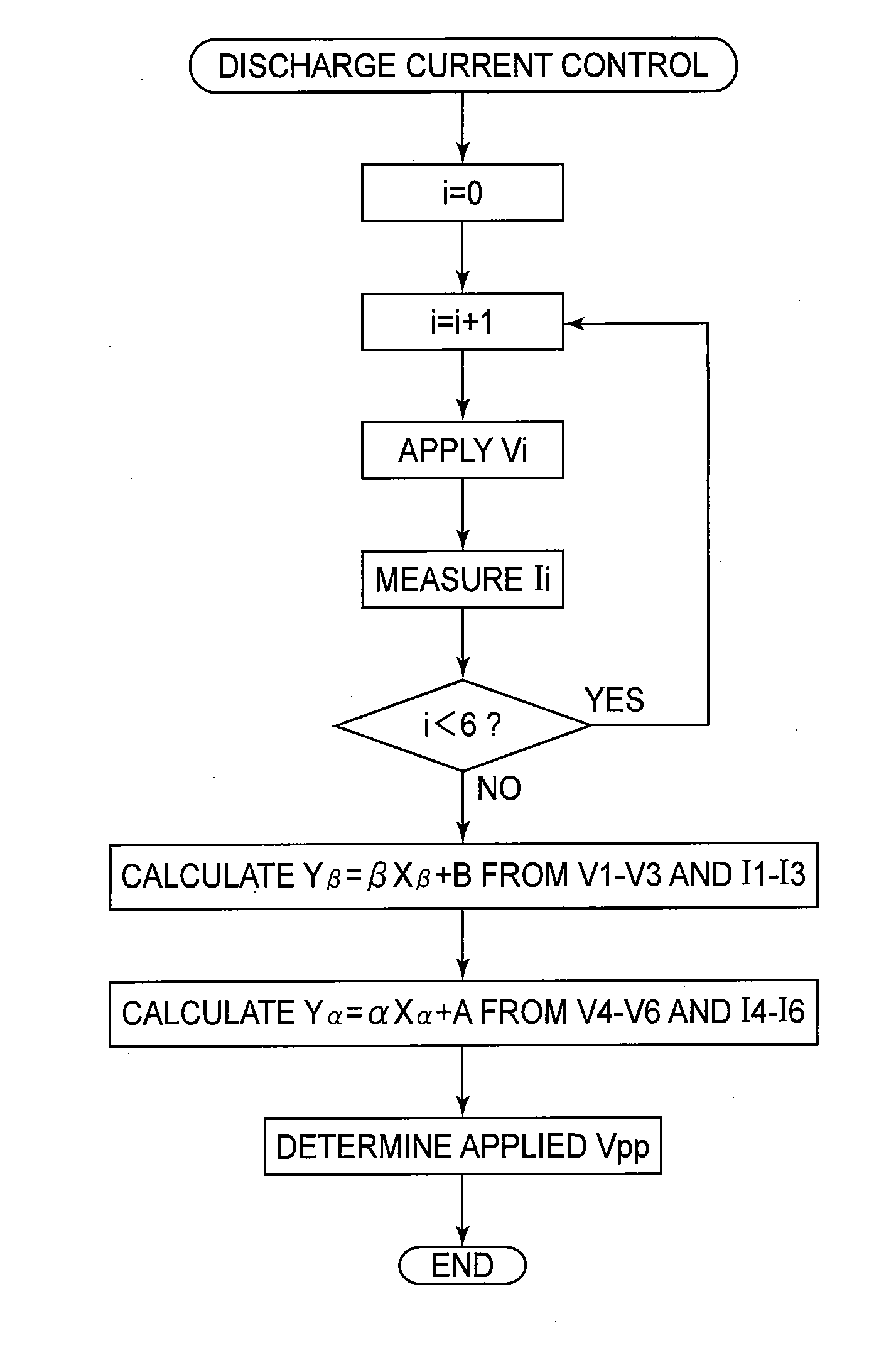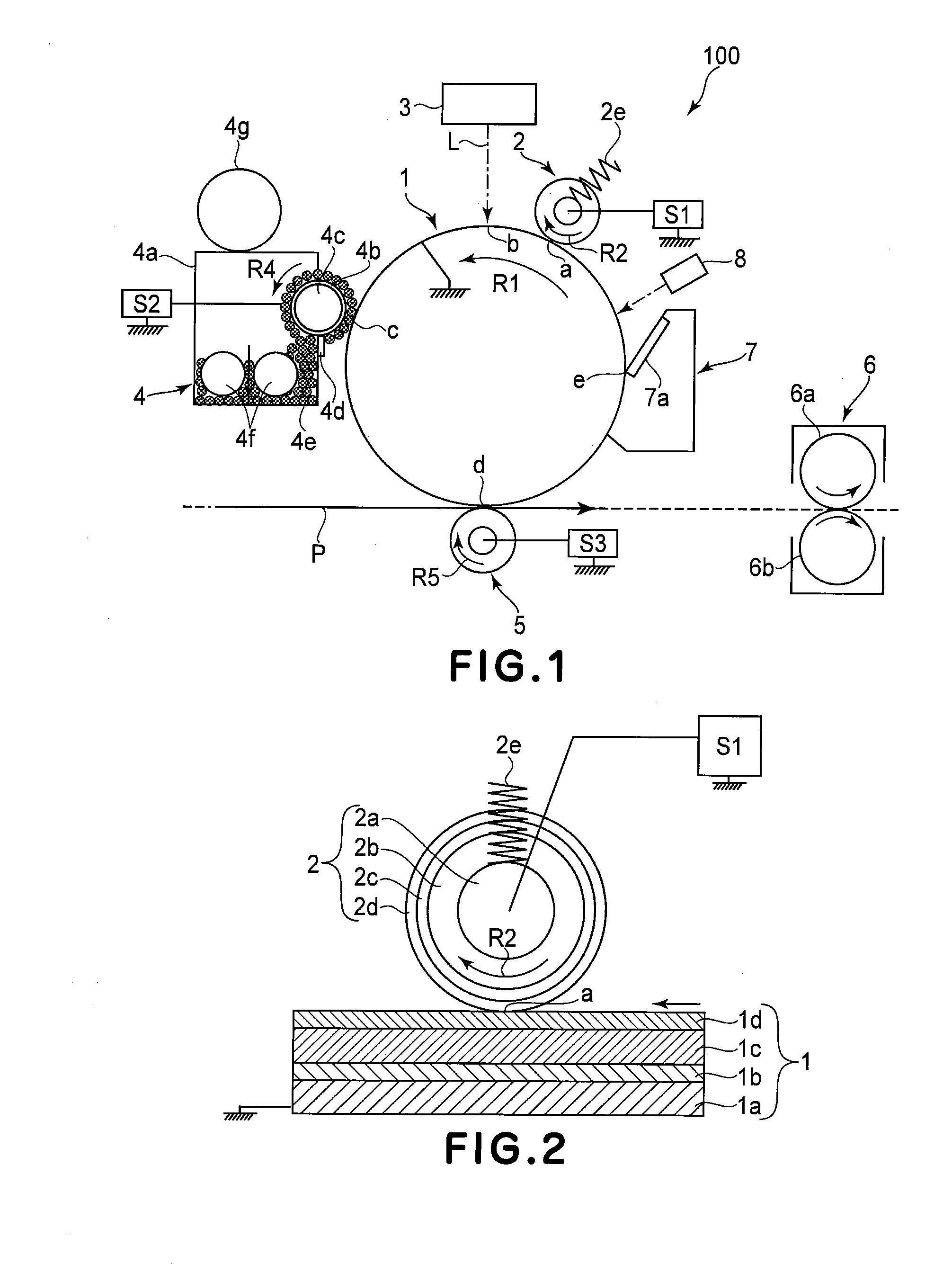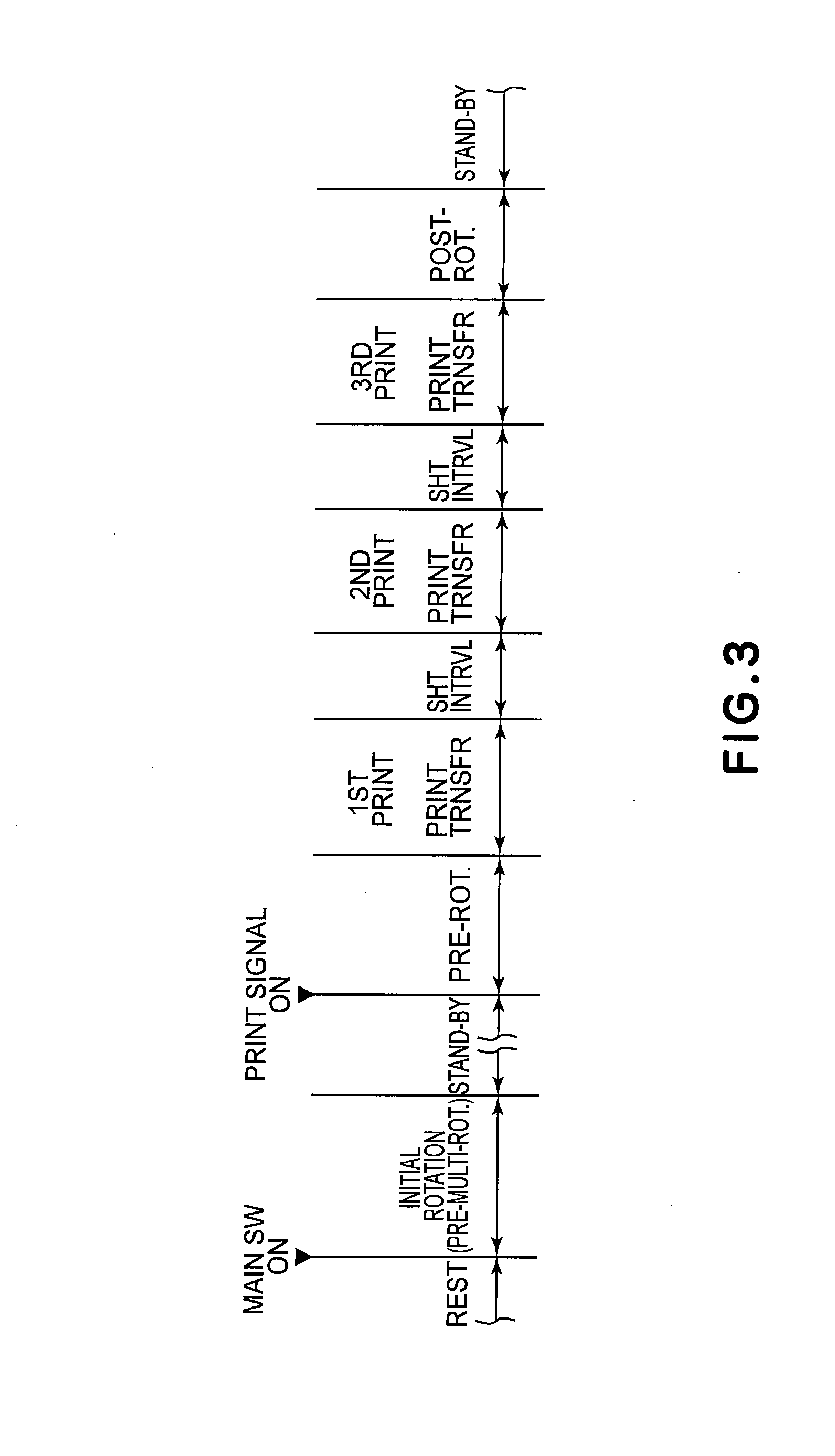Image forming apparatus
a technology of image forming apparatus and charging member, which is applied in the direction of electrographic process apparatus, instruments, etc., can solve the problems of deterioration of image bearing member such as abrasion (wearing) of image bearing member, inability to maintain constant relationship between voltage applied to charging member and electric discharge amount, etc., to suppress the effect of lowering the productivity of an imag
- Summary
- Abstract
- Description
- Claims
- Application Information
AI Technical Summary
Benefits of technology
Problems solved by technology
Method used
Image
Examples
embodiment 1
1. General Structure of Image Forming Apparatus
[0051]FIG. 1 is a schematic view for illustrating an example of a general structure of the image forming apparatus according to the present invention. In this embodiment, an image forming apparatus is a laser beam printer which utilizes a transfer type electrophotographic process, which employs a contact charging method and a reverse development method, and which has an A3 size as a maximum sheet passing size.
[0052]The image forming apparatus 100 includes a rotatable drum-type photosensitive member (electrophotographic photosensitive member) i.e., a photosensitive drum 1. The photosensitive drum 1 is rotationally driven in a direction indicated by an arrow R1 (counterclockwise direction). Around the photosensitive drum 1, along the rotational direction of the photosensitive drum 1, the following means are disposed. That is, the means include a charging device (a roller charger) 2 as a contact charging member which is a charging means, a...
embodiment 2
[0131]Another embodiment of the present invention will be described. In the image forming apparatus in this embodiment, members or portions having the same or corresponding functions and constitutions as those in the image forming apparatus described in Embodiment 1 and represented by the same reference numerals or symbols, thus being omitted from detailed description. In this embodiment, the constant current control of the charging voltage is carried out by using the value of the AC current flowing at the time when the AC voltage value determined by effecting the discharge current control described in Embodiment 1 is applied.
[0132]In the case where speed-up of the image forming apparatus is advanced to permit many times of an output operation, the electric resistance value of the charging roller fluctuations in a short time. When the constant voltage control was effected in such a case, it was found that the discharge current was excessively increased. On the other hand, in the cas...
embodiment 3
[0147]Another embodiment of the present invention will be described. In the image forming apparatus in this embodiment, members or portions having the same or corresponding functions and constitutions as those in the image forming apparatus described in Embodiment 1 and represented by the same reference numerals or symbols, thus being omitted from detailed description. In this embodiment, a method for reducing the time of the normal discharge current control described in Embodiments 1 and 2 will be described.
[0148]In Embodiment 1, in the normal discharge current control, first, in the setting of the process speed at 300 mm / sec and the charging frequency at 2 kHz, the sampling of 3 peak-to-peak voltages of less than Vth×2 (V) and 3 peak-to-peak voltages of not less than Vth×2 (V) was made. In addition thereto, in the setting of the process speed at 300 mm / sec and the charging frequency at 1 kHz, the sampling of 3 peak-to-peak voltages of less than Vth×2 (V) and 3 peak-to-peak voltage...
PUM
 Login to View More
Login to View More Abstract
Description
Claims
Application Information
 Login to View More
Login to View More - R&D
- Intellectual Property
- Life Sciences
- Materials
- Tech Scout
- Unparalleled Data Quality
- Higher Quality Content
- 60% Fewer Hallucinations
Browse by: Latest US Patents, China's latest patents, Technical Efficacy Thesaurus, Application Domain, Technology Topic, Popular Technical Reports.
© 2025 PatSnap. All rights reserved.Legal|Privacy policy|Modern Slavery Act Transparency Statement|Sitemap|About US| Contact US: help@patsnap.com



